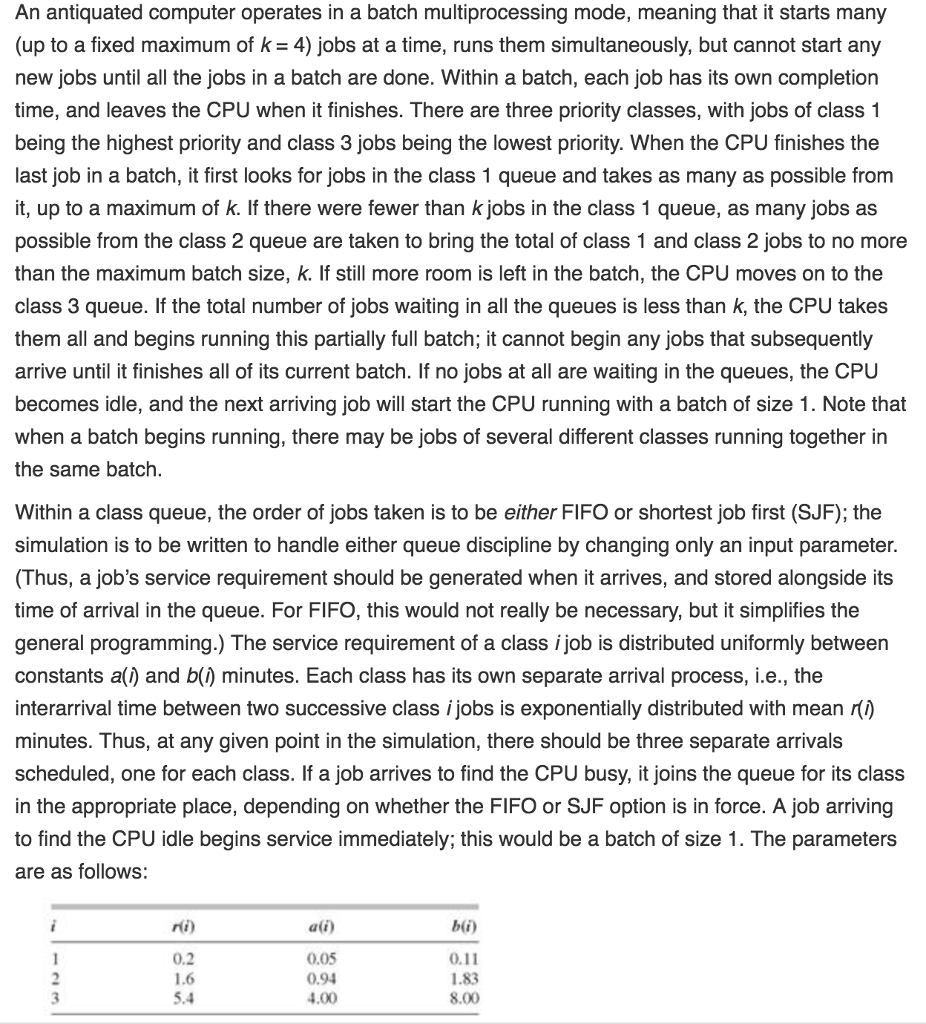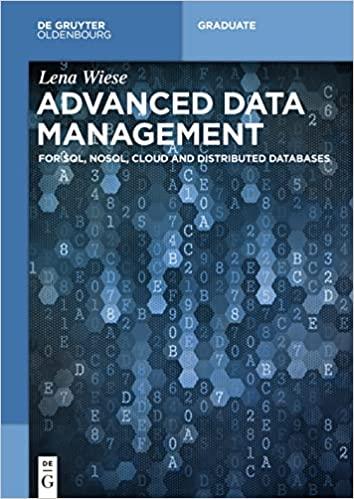

An antiquated computer operates in a batch multiprocessing mode, meaning that it starts many (up to a fixed maximum of k = 4) jobs at a time, runs them simultaneously, but cannot start any new jobs until all the jobs in a batch are done. Within a batch, each job has its own completion time, and leaves the CPU when it finishes. There are three priority classes, with jobs of class 1 being the highest priority and class 3 jobs being the lowest priority. When the CPU finishes the last job in a batch, it first looks for jobs in the class 1 queue and takes as many as possible from it, up to a maximum of k. If there were fewer than kjobs in the class 1 queue, as many jobs as possible from the class 2 queue are taken to bring the total of class 1 and class 2 jobs to no more than the maximum batch size, k. If still more room is left in the batch, the CPU moves on to the class 3 queue. If the total number of jobs waiting in all the queues is less than k, the CPU takes them all and begins running this partially full batch; it cannot begin any jobs that subsequently arrive until it finishes all of its current batch. If no jobs at all are waiting in the queues, the CPU becomes idle, and the next arriving job will start the CPU running with a batch of size 1. Note that when a batch begins running, there may be jobs of several different classes running together in the same batch Within a class queue, the order of jobs taken is to be either FIFO or shortest job first (SJF); the simulation is to be written to handle either queue discipline by changing only an input parameter. (Thus, a job's service requirement should be generated when it arrives, and stored alongside its time of arrival in the queue. For FIFO, this would not really be necessary, but it simplifies the general programming.) The service requirement of a class ijob is distributed uniformly between constants a() and b() minutes. Each class has its own separate arrival process, i.e., the interarrival time between two successive class ijobs is exponentially distributed with mean r(i) minutes. Thus, at any given point in the simulation, there should be three separate arrivals scheduled, one for each class. If a job arrives to find the CPU busy, it joins the queue for its class in the appropriate place, depending on whether the FIFO or SJF option is in force. A job arriving to find the CPU idle begins service immediately; this would be a batch of size 1. The parameters are as follows: rli) alf) 0.2 0.05 0.94 4.00 0.11 1.83 8.00








